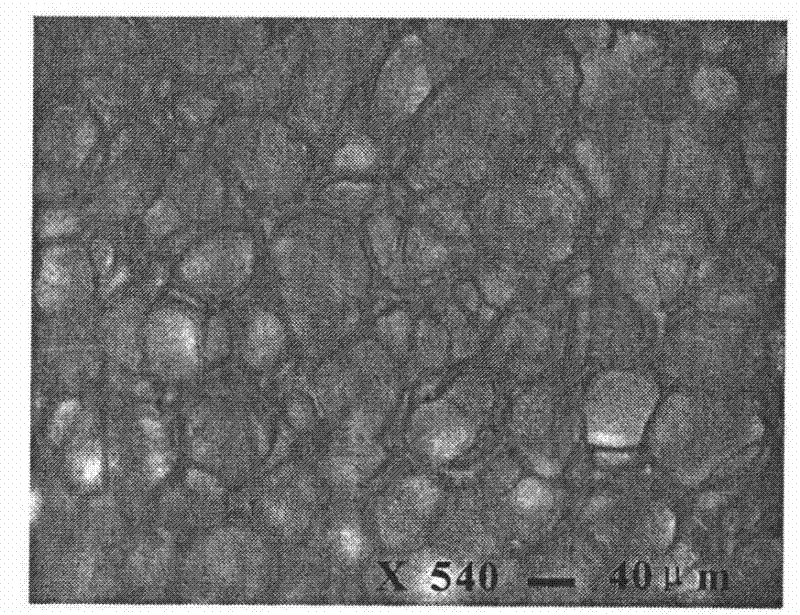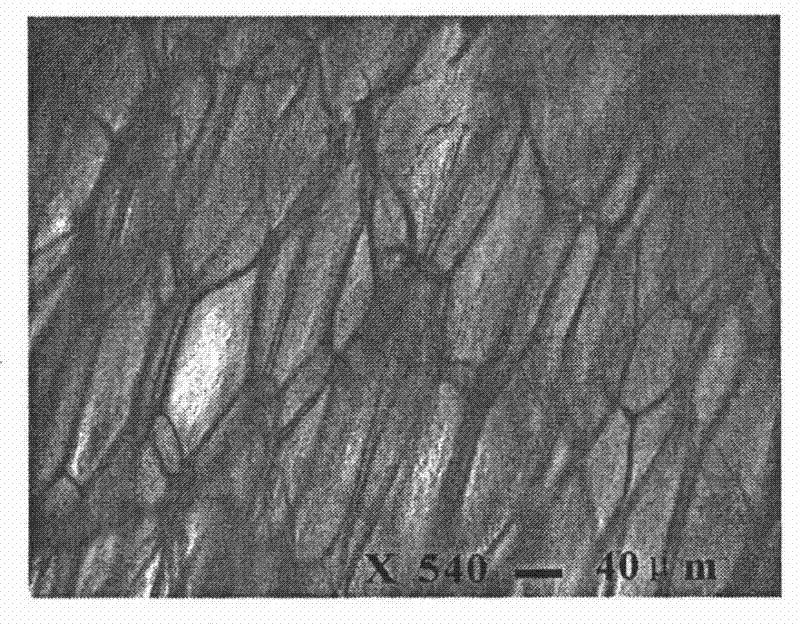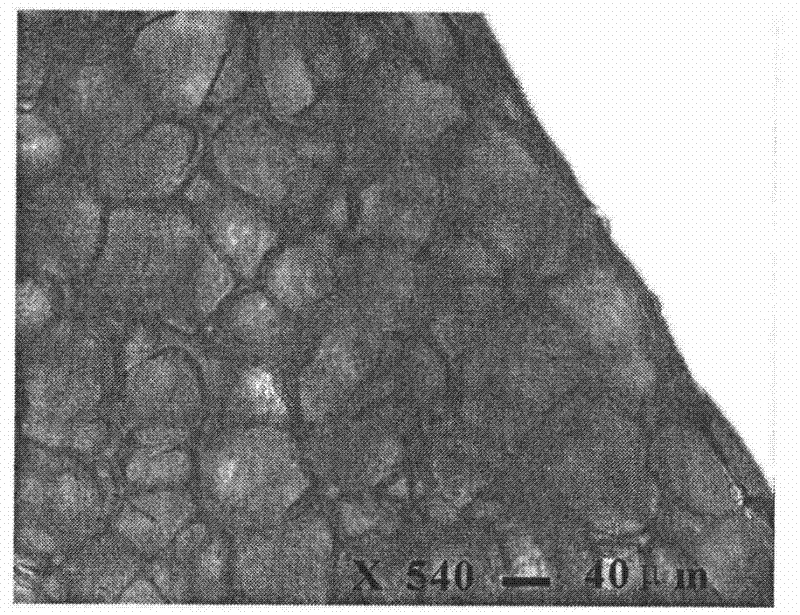High foaming-ratio and high-density polyethylene microporous foaming section bar and its preparation method
A high-density polyethylene and microcellular foaming technology, applied in the coating and other directions, can solve the problems of only 1.1-2.0 times the foaming ratio, inevitable core layer and skin layer structure, uneven product foaming, etc. Achieve the effect of easy operation, favorable industrial production and short production cycle
- Summary
- Abstract
- Description
- Claims
- Application Information
AI Technical Summary
Problems solved by technology
Method used
Image
Examples
Embodiment 1
[0039] Put the 6 kinds of HDPE raw material particles with a melt index in the range of 0.7-20g / 10min into the high-pressure mold of the physical gas foaming device to ensure that the total volume of the particles does not exceed 1 / 25 of the mold volume, so that the particles have enough space Foaming is performed. When the mold reaches the set temperature of 132°C, fill it with 20MPa of N2, keep the pressure at a constant temperature for 10 minutes, and then release the pressure to normal pressure at a speed of 28MPa / s. The foamed material was taken out and subjected to optical microscope analysis and density measurement, the results are shown in Table 1.
[0040] Table 1 Comparison of structural properties of foamed materials with different melt index HDPE raw materials
[0041]
Embodiment 2
[0043] The HDPE 6 particles are placed in a high-pressure mold in a physical gas foaming device to ensure that the total volume of the particles does not exceed 1 / 25 of the mold volume, so that the particles have enough space for foaming. When the mold reaches the set temperature, fill it with 20MPa N 2 , kept at constant temperature and pressure for 10 minutes, and then released to normal pressure at a speed of 28MPa / s. The foamed material was taken out and subjected to optical microscope analysis and density measurement, the results are shown in Table 2.
[0044] Table 2 Comparison of structural properties of HDPE foamed materials prepared at different foaming temperatures
[0045]
Embodiment 3
[0047] Put the HDPE 1 particles in the high-pressure mold of the molding physical gas foaming device to ensure that the total volume of the particles does not exceed 1 / 25 of the mold volume, so that the particles have enough space for foaming. When the mold reaches the set temperature of 130°C, fill it with different pressures of N 2 , constant temperature and pressure for 5-20 minutes, and then release the pressure to normal pressure at a certain speed. The foamed material was taken out and subjected to optical microscope analysis and density measurement, the results are shown in Table 3.
[0048] Table 3 Comparison of structural properties of HDPE foamed materials prepared by different foaming pressures
[0049]
PUM
| Property | Measurement | Unit |
|---|---|---|
| density | aaaaa | aaaaa |
| pore size | aaaaa | aaaaa |
| melt flow index | aaaaa | aaaaa |
Abstract
Description
Claims
Application Information
 Login to View More
Login to View More - R&D
- Intellectual Property
- Life Sciences
- Materials
- Tech Scout
- Unparalleled Data Quality
- Higher Quality Content
- 60% Fewer Hallucinations
Browse by: Latest US Patents, China's latest patents, Technical Efficacy Thesaurus, Application Domain, Technology Topic, Popular Technical Reports.
© 2025 PatSnap. All rights reserved.Legal|Privacy policy|Modern Slavery Act Transparency Statement|Sitemap|About US| Contact US: help@patsnap.com



